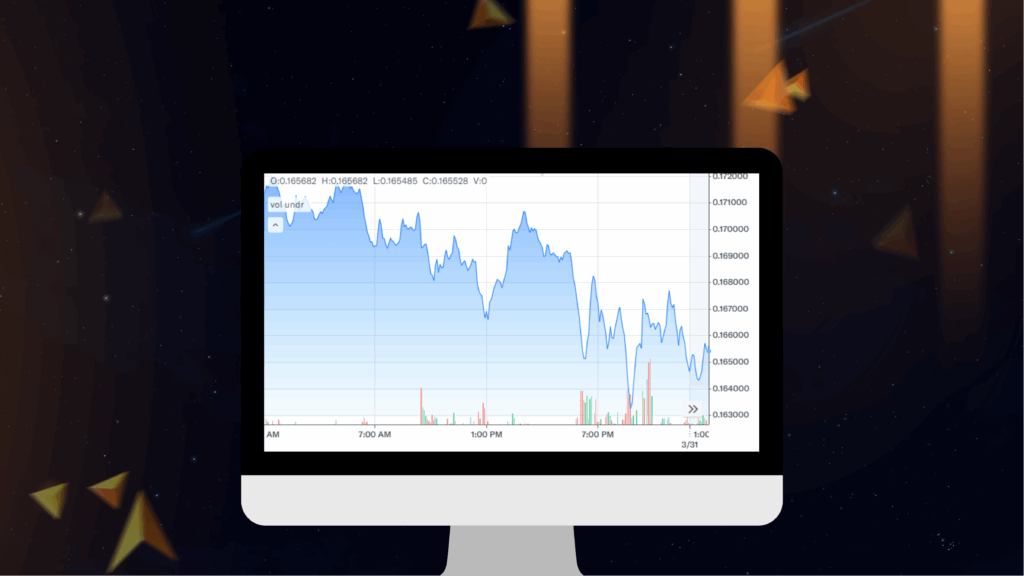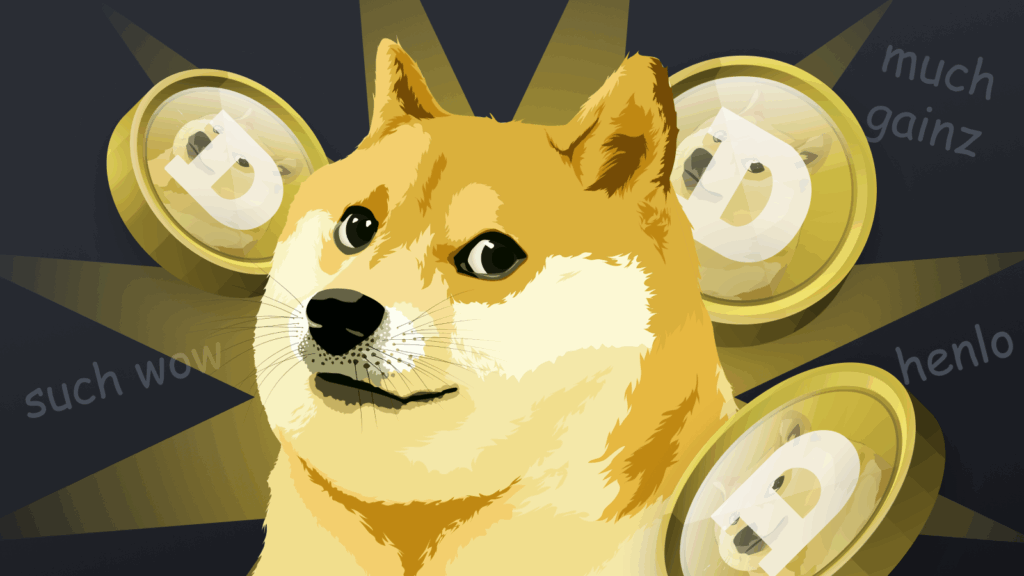Dogecoin may have started as a joke, but it has survived longer than most serious projects in crypto. Despite the recent dips and fading hype, calling DOGE “dead” might be premature. In fact, its unique community, surprising use cases, and sudden spikes in mainstream attention keep it in the conversation. In this post, we’ll explore why DOGE can still pump—and why, against all odds, it might be gearing up for another run. Whether you’re a long-time holder or just DOGE-curious, it’s worth understanding the factors that keep this meme coin relevant. Let’s dive in.
As of March 31, 2025, Dogecoin (DOGE) is trading at approximately $0.166388 USD, reflecting a slight decline of about 1.61% from the previous close. Recently, DOGE has experienced a downtrend, with its price decreasing from a peak of $0.47 in November 2024 to its current level. This decline mirrors the broader bearish sentiment in the cryptocurrency market, influenced by factors such as Bitcoin’s performance and overall market dynamics.

What is Dogecoin?
Dogecoin (DOGE) is a decentralized, peer-to-peer cryptocurrency that started as a joke but evolved into one of the most recognizable digital assets in the crypto space. It was inspired by the famous “Doge” meme featuring a Shiba Inu dog and was initially created as a fun alternative to Bitcoin. Despite its humorous origins, Dogecoin has built a strong community and has been used for tipping, charitable donations, and even large-scale fundraising efforts.

Key Features of Dogecoin:
- Fast Transactions: Compared to Bitcoin, Dogecoin has a shorter block time (1 minute), making transactions faster.
- Low Fees: DOGE transactions typically have lower fees, making it practical for micropayments.
- Inflationary Supply: Unlike Bitcoin’s capped supply of 21 million coins, Dogecoin has an unlimited supply, with approximately 5 billion new coins entering circulation annually.
- Strong Community Support: The Dogecoin community is known for its generosity, often raising funds for charitable causes and events.
History of Dogecoin
1. Creation (2013)
Dogecoin was created by Billy Markus, a software engineer from IBM, and Jackson Palmer, a product manager at Adobe, in December 2013. It was initially developed as a satire of the cryptocurrency craze, mocking the speculative nature of digital assets. However, the meme-based branding and ease of mining made it quickly gain popularity.
2. Early Popularity (2014-2017)
In its early years, Dogecoin became widely used for online tipping and donations. Some notable events include:
- Raising $50,000 to send the Jamaican bobsled team to the 2014 Winter Olympics.
- Raising over $30,000 to provide clean water to communities in Kenya.
- Sponsoring NASCAR driver Josh Wise, who raced in a Dogecoin-themed car.
Despite its popularity, the departure of co-founder Jackson Palmer in 2015 led to concerns about Dogecoin’s future.
3. Revival & Elon Musk Effect (2020-Present)
Dogecoin saw a massive resurgence in 2020-2021, primarily driven by:
- Elon Musk’s tweets and endorsements, calling Dogecoin “the people’s crypto.”
- Reddit and social media movements, including r/WallStreetBets’ push to pump DOGE’s price.
- Mainstream adoption, with companies like Tesla accepting DOGE for payments and Mark Cuban’s Dallas Mavericks embracing it for merchandise.

4. Current Status & Future Prospects
Today, Dogecoin is among the top cryptocurrencies by market capitalization. While some still see it as a meme coin, others believe it has potential as a low-cost, efficient digital currency for everyday transactions.
Price Predictions for 2025
Various analysts and platforms have provided forecasts for DOGE’s price trajectory in 2025:
- CoinCodex predicts a significant rise, estimating that DOGE could reach approximately $0.570978 by April 27, 2025.
- Changelly offers a more conservative estimate, projecting an average price of $0.785 for 2025, with a maximum potential price of $0.483.
- Benzinga provides a range, with a lowest prediction of $0.172, an average of $0.341, and a maximum of $0.731 for 2025.
Dogecoin’s influence extends beyond its role as a cryptocurrency; it has significantly impacted the NFT (Non-Fungible Token) landscape. Notably, the original “Doge” meme featuring the Shiba Inu, Kabosu, was minted as an NFT in 2021 and sold for approximately $4 million, highlighting the cultural and economic value associated with Doge-themed digital assets.
Do you want to know how you can fund such NFTs? Hop onto our blog where we dive deep into how you can evaluate NFT projects.
10 Reasons why DOGE can pump
Despite its origins, DOGE has demonstrated resilience and potential for future growth. Here are ten factors that could contribute to a potential price surge for Dogecoin:

1. Widespread Adoption as a Payment Method: Increased acceptance of Dogecoin for transactions across various platforms and businesses can drive demand. For instance, if integrated into Elon Musk’s ecosystem, DOGE’s market cap could reach substantial figures, potentially elevating its price.
2. Technological Developments: Upgrades to the Dogecoin network, such as enhanced transaction speeds and security features, can improve its utility and attractiveness to users and investors.
3. Influential Endorsements: Support from high-profile figures like Elon Musk has historically impacted DOGE’s price. Continued endorsements can boost investor confidence and drive price increases.
4. Institutional Investment: Growing interest from institutional investors can provide significant capital inflows, stabilizing and potentially increasing DOGE’s market value.
5. Regulatory Clarity: Clear and favorable regulatory frameworks can reduce uncertainty, encouraging more participants to invest in Dogecoin.
6. Market Sentiment and Media Coverage: Positive media coverage and social media trends can amplify interest and demand, leading to price surges.
7. Macro-Economic Factors: Economic conditions, such as inflation or currency devaluation, can drive investors toward alternative assets like cryptocurrencies, including Dogecoin.
8. Partnerships and Integrations: Collaborations with major companies or integration into popular platforms can enhance DOGE’s visibility and utility, attracting more users.
9. Community Engagement: A strong and active community can drive grassroots campaigns, increasing adoption and support for Dogecoin.
10. Global Economic Policies: Policies favoring digital currencies, such as those proposed by political figures, can create an environment conducive to Dogecoin’s growth.
Factors hindering the growth of Dogecoin
While Dogecoin (DOGE) has significant potential for price surges, there are several caveats that could hinder its ability to pump in the future. Here are some key factors:
1. Unlimited Supply & Inflationary Model
Unlike Bitcoin, which has a fixed supply of 21 million coins, Dogecoin has no cap, with approximately 5 billion DOGE added to circulation every year. This continuous inflation dilutes its value over time, making it harder for the price to sustain long-term growth.
2. Lack of Utility & Development Activity
Compared to other cryptocurrencies like Ethereum or Solana, Dogecoin lacks smart contract functionality, limiting its use cases. Additionally, Dogecoin’s development team is relatively small, and major updates are rare, making it less appealing to developers and institutional investors.
3. Centralized Holdings (Whale Control)
A significant portion of DOGE is held by a small number of wallets, meaning a few large holders (whales) can manipulate the price by selling large amounts at key moments. This reduces price stability and increases volatility.
4. Over-Reliance on Elon Musk & Social Media Hype
Dogecoin’s biggest price surges have been driven by tweets and endorsements from Elon Musk rather than fundamental improvements. If Musk loses interest or stops promoting DOGE, demand could decrease sharply. The same applies to social media hype, which is unpredictable and unsustainable in the long run.
5. Lack of Institutional Adoption
While some companies, like Tesla and the Dallas Mavericks, accept Dogecoin for payments, it still lacks widespread adoption by major corporations and financial institutions. Without strong institutional backing, it remains highly speculative.
6. Competition from Other Cryptos
Newer and more technologically advanced cryptocurrencies are emerging, offering better transaction speeds, lower fees, and more use cases. Memecoins like Shiba Inu ($SHIB) and other innovative cryptos could divert attention away from DOGE.
7. Regulatory Risks
Government regulations around cryptocurrencies could negatively impact Dogecoin. If regulators crack down on meme coins or impose strict compliance measures, it could limit trading availability and reduce demand.
8. Market Cycles & Bear Markets
Dogecoin, like most cryptocurrencies, is heavily affected by market cycles. During bear markets, speculative assets like DOGE tend to suffer more than fundamentally strong projects, leading to long periods of price stagnation or decline.
9. Low Developer & Ecosystem Growth
Unlike Ethereum, which has a vast ecosystem of DeFi applications, NFTs, and Layer 2 solutions, Dogecoin’s ecosystem remains limited. Without significant innovation or new functionalities, its long-term growth potential is restricted.
10. Speculative Nature & Lack of Serious Investors
DOGE is often seen as a meme-driven speculative asset rather than a serious investment. Many investors trade it for quick profits rather than long-term holding, leading to extreme volatility and unpredictable price movements.
Conclusion
Dogecoin has defied expectations time and time again, proving that even a meme coin can achieve mainstream recognition and significant price surges. Factors such as increased adoption, high-profile endorsements (especially from Elon Musk), and a strong community continue to drive DOGE’s potential for future pumps. In the end, whether Dogecoin will remain a cultural phenomenon or evolve into a practical cryptocurrency depends on how it overcomes its current limitations.
While many factors present potential avenues for Dogecoin’s price appreciation, it’s essential to recognize the inherent volatility and risks associated with cryptocurrency investments. Investors should conduct thorough research and consider their risk tolerance before engaging in the crypto market.

